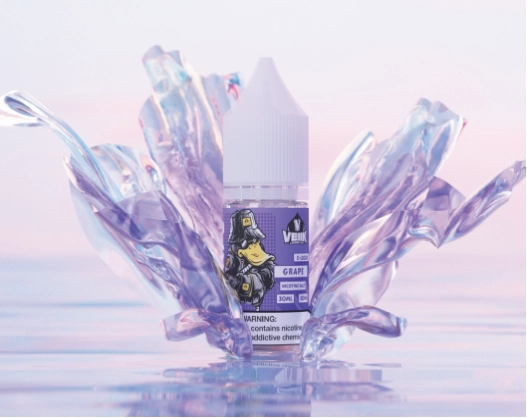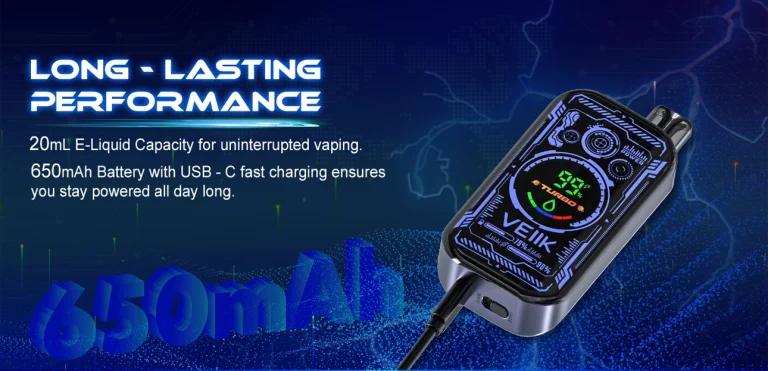Introduction to Pod vs Tank Vape Systems
Vaping has progressed remarkably over time, presenting users with a broad variety of gadgets tailored to diverse tastes. Among the most widespread options are vape pods and vape tanks. Both setups fulfill an identical role—converting e-liquid into mist—yet they vary in structure, efficiency, and overall feel.

Grasping the difference between pod and tank vape systems is vital for selecting the ideal choice suited to your desires. Certain individuals value ease and mobility highly. Others, however, chase enhanced mist output and personalization. In this overview, we’ll dive deeply into the pod vs tank vape discussion. Our goal? To assist you in reaching a well-informed conclusion.
Pods vs. Tanks: The Similarities
Shared Core Functionality 
Although pods and tanks differ in appearance, they possess a comparable essential purpose: warming e-liquid to create mist. Each relies on coils, wicks, and an energy source—usually a battery or mod. Whether you opt for a vape pod vs tank, both will supply nicotine and taste efficiently. Still, the methods they employ and the degree of adaptability they provide diverge significantly.
User-Centric Design Trends
Both vape pods and vape tanks have transformed to satisfy user needs for simplicity and effectiveness. Many contemporary tanks now boast traits once linked solely to pods. For instance, they feature spill-resistant builds and straightforward coil setups. Likewise, pod systems have grown more sophisticated. They now include adjustable energy controls and refillable choices. This overlap renders the pod vs tank vape choice increasingly compelling. Users can discover elements of both realms in blended devices.
What Are Vape Pods?

Vape pods are small, approachable tools crafted for practicality. They enjoy particular favor among novices and those craving a fuss-free vaping journey.
Closed System Pod Mods
Closed-system pods arrive preloaded with e-liquid. Once the liquid depletes, they’re meant to be discarded. These pods suit those desiring a smooth, no-effort experience. Refilling or swapping coils isn’t necessary. Yet, they restrict taste variety. Over time, they may prove costlier than refillable options.
Open System Pod Mods
Open-system pods permit users to add their preferred e-liquid. This grants more freedom in picking flavors and nicotine levels. Some open pods, like those in pod tank vape systems, even allow varied coil resistances. This flexibility offers a tailored experience. As a result, they bridge the gap between classic pods and tanks effectively.
Vape Pods: Pros and Cons
Pros of Pod Systems
Vape pods are exceptionally mobile and subtle. This makes them a fantastic pick for users on the move. They demand minimal upkeep. No intricate coil assemblies or tank washing routines are required. Their simplicity renders them ideal for newcomers. Those seeking an uncomplicated vaping path—free of technical hurdles—benefit greatly.
Cons of Pod Systems
A drawback of pod systems is their tendency to generate tinier mist clouds compared to tanks. Their petite size also means shorter battery duration. If you choose prefilled pods, expenses can mount over time. You must replace the whole pod, not merely a coil.
What Are Vape Tanks?

Vape tanks are bigger, more adjustable devices. They enable users to shape their vaping adventure. These hold greater amounts of e-liquid than pods. Plus, they deliver superior efficiency for mist creation and flavor richness.
Parts of a Vape Tank
A typical vape tank includes a glass container for e-liquid, a detachable coil, a chimney to guide mist, and a drip tip for inhalation. Many tanks also feature adjustable airflow. This lets users tweak draw resistance and mist thickness.
Different Types of Tanks
Several tank varieties exist, each matching distinct vaping approaches. Sub-ohm tanks suit direct-to-lung (DTL) vaping. They produce substantial mist clouds. Mouth-to-lung (MTL) tanks replicate the sensation of regular cigarettes. They pair nicely with nicotine salts. Rebuildable tank atomizers (RTAs) let seasoned users craft their own coils. This maximizes personalization.
Vape Tanks: Pros and Cons
Pros of Tank Systems
Vape tanks provide outstanding flavor and mist output compared to pods. Their personalization features—like coil resistance and airflow adjustments—let users refine their experience. Tanks also last longer. Users replace only coils, not entire pods.
Cons of Tank Systems
The bulkier size and intricacy of tanks may deter some. They need frequent washing and care to avoid spills and sustain efficiency. Moreover, tanks use more e-liquid. This can elevate costs over time.
Key Differences Between Pod and Tank Vapes
Design & Portability
Pods are sleek and light, simplifying transport. Tanks, conversely, are heftier. They require a separate mod. This reduces portability but boosts power.
Performance & Customization
If you seek a basic, hassle-free experience, a pod or tank vape could be a simple decision. It hinges on your priorities. Pods emphasize convenience. Tanks, however, offer advanced personalization and greater mist production.
E-Liquid Compatibility
Pods often utilize nicotine salts. These deliver a gentler throat sensation and higher nicotine potency. Tanks are more adaptable. They let users try freebase nicotine, high-VG blends, and diverse coil arrangements. This versatility marks a key difference between pod and tank vape systems.
How to Choose: Pod or Tank Vape?
For Beginners
If vaping is new to you and ease matters most, a pod vape tank might suit you best. Prefilled pods remove the need to refill. Open pods, meanwhile, balance simplicity with adaptability.
For Enthusiasts
Seasoned vapers who relish chasing clouds and exploring flavors will prefer tanks. With tanks, you can test various coil builds, airflow options, and power settings. This crafts a bespoke experience.
Hybrid Solutions
Certain devices blend the finest traits of both. They merge pod mobility with tank efficiency. These hybrid pod tank vape systems offer refillable pods with adjustable controls. They’re perfect for those wanting flexibility minus a traditional tank’s bulk.
Maintenance Tips for Pods and Tanks
How to Clean Pod Tanks for Vape
Routine cleaning is crucial for keeping your device effective. To clean a pod vape tank, detach the pod or tank from the gadget. Empty leftover e-liquid. Then rinse it with warm water. Allow it to dry fully in the air before adding more liquid. For tanks, take apart all components. Soak them in warm water for a deeper clean.
Avoiding Leaks and Burnt Coils
Stop leaks by checking seals are secure and coils are fitted correctly. Prevent dry hits by priming fresh coils before use. For both pod tanks vape and standard tanks, regular cleaning and proper care extend their life.
FAQs About Pod vs Tank Vapes
- Is pod vape juice different from tank vape juice?
Yes, pod vape juice typically contains nicotine salts. Tank vape juice often has higher VG for bigger clouds. - How to clean pod tanks for vape?
Take apart the pod or tank. Rinse it with warm water. Let it dry completely before refilling. - Which is better for beginners: pod or tank vape?
Pods suit beginners more. They’re simple to use and require little upkeep. - Can I use a pod tank on a regular mod?
Some open-system pods work with mods. Compatibility depends on the device.
Final Thoughts & Custom Solutions
Pods and tanks each shine in unique ways, appealing to varied user preferences. Pods are sleek and practical. Tanks excel in efficiency and adaptability. For companies seeking bespoke vaping options, VEIIK offers ODM/wholesale services. They craft market-ready tools based on client insights.
Explore tailored vaping solutions with VEIIK—reach out today for bulk orders and creative product designs!









